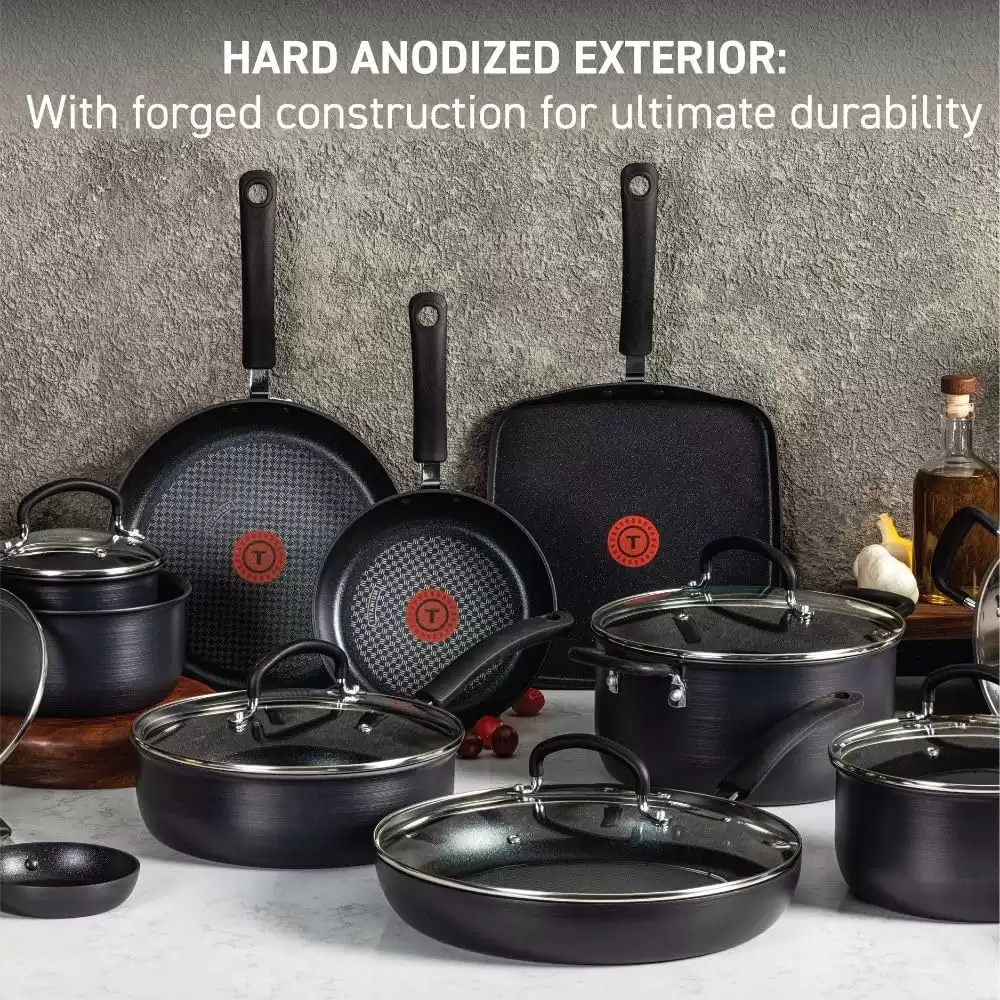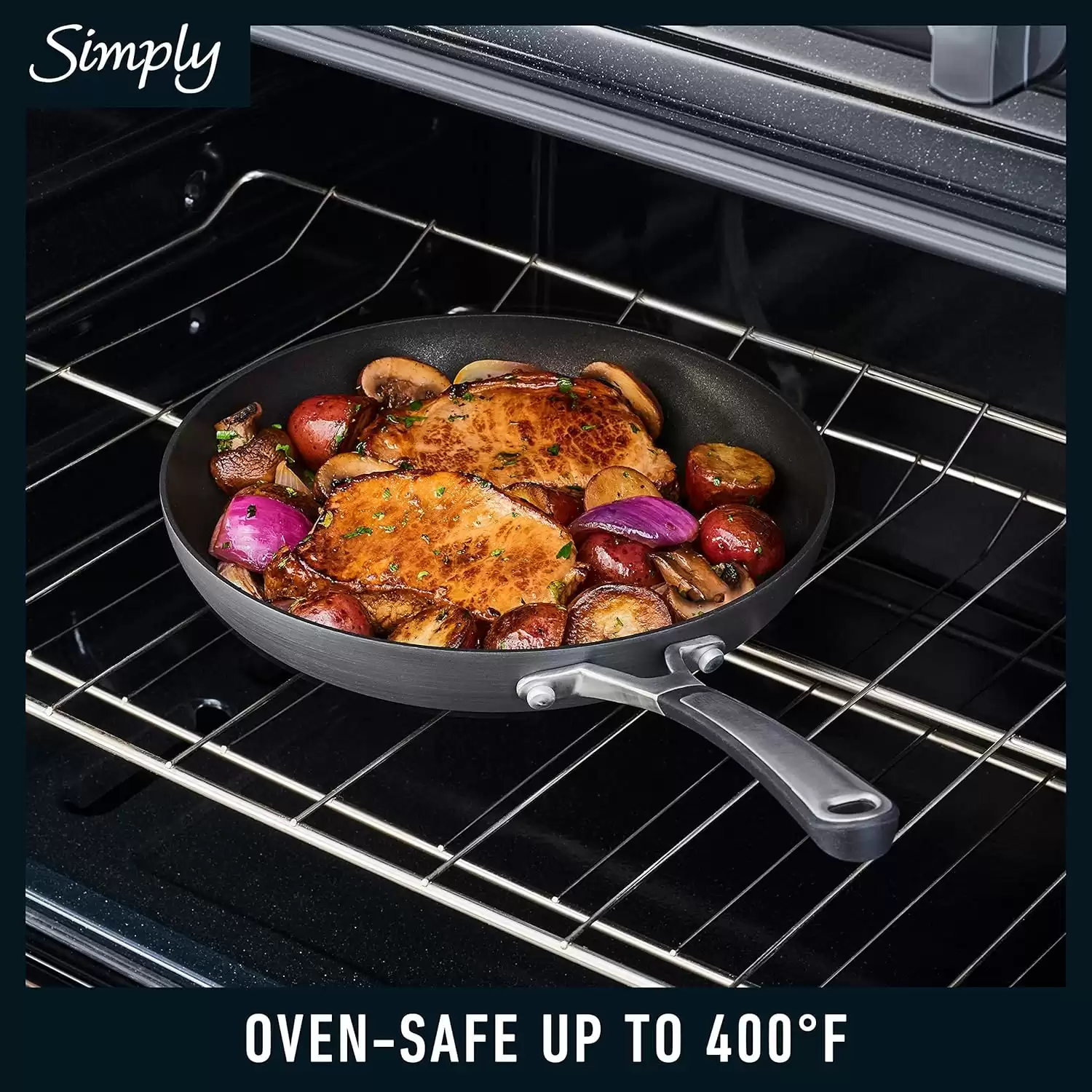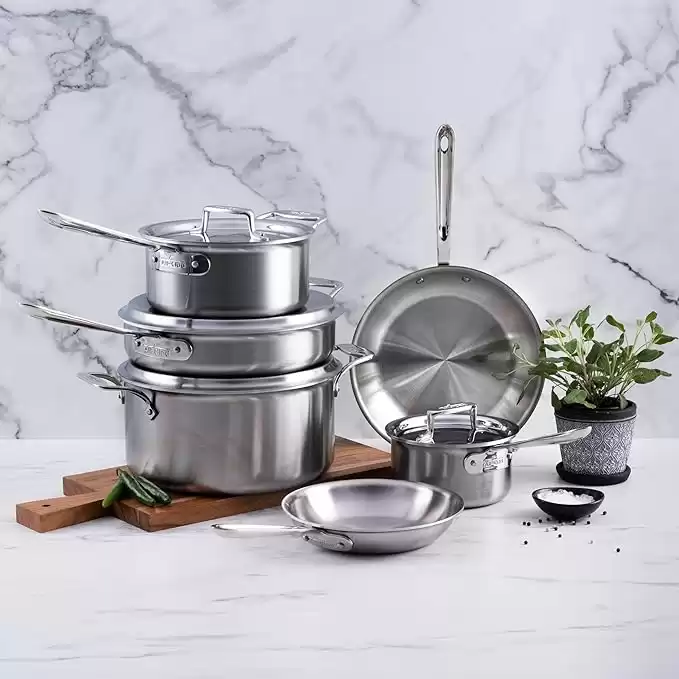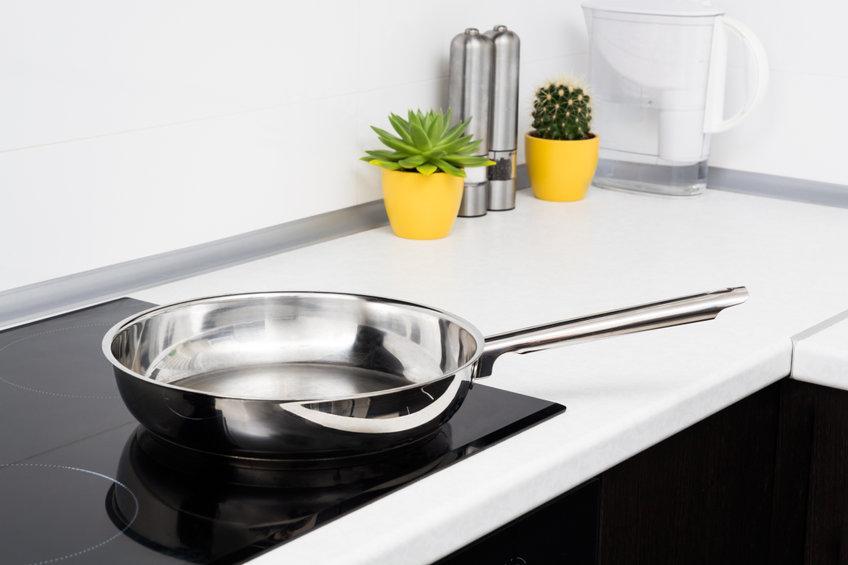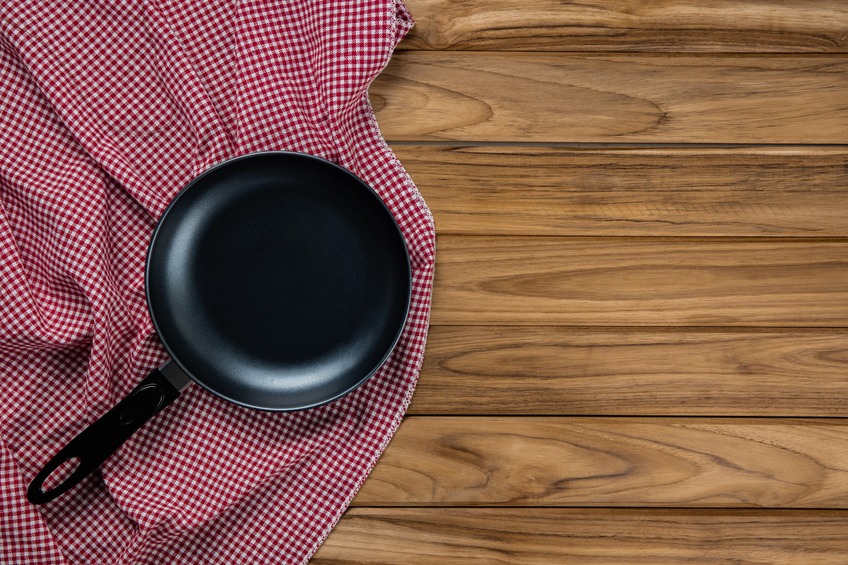
Non-stick cookware has become an essential part of every kitchen.
It makes cooking and cleaning a breeze, and it’s perfect for preparing delicate dishes that require gentle handling.
However, not all non-stick cookware is created equal.
Some pots and pans lose their non-stick coating after just a few uses, while others can last for years.
In this article, we will explore the world of long-lasting non-stick pots and pans.
When shopping for non-stick cookware, it’s essential to consider the durability of the non-stick coating.
A high-quality non-stick coating can make all the difference when it comes to the longevity of your cookware.
The longer the coating lasts, the less often you’ll need to replace your pots and pans. This not only saves you money in the long run but also reduces waste.
In this article, we will take a closer look at the best long-lasting non-stick pots and pans on the market.
Whether you’re a professional chef or a home cook, having long-lasting non-stick cookware is a game-changer.
It allows you to cook with ease and confidence, knowing that your food won’t stick to the pan.
It also makes cleaning up a breeze, as you won’t have to spend hours scrubbing away at burnt-on food.
In this article, we will provide you with all the information you need to choose the best long-lasting non-stick pots and pans for your kitchen.
Longest Lasting Non-Stick Pots and Pans
|
Description: Durable, non-stick cookware with Thermo-Spot heat indicator. Includes various pans, oven-safe to 400°F, with silicone handles and vented lids. Suitable for most stovetops (except induction). Limited lifetime warranty. |
Description: Made of hard-anodized aluminum, it resists corrosion and warping. The 2-layer nonstick interior ensures easy cleanup, while long silicone handles stay cool for safety. Oven-safe up to 400°F. Contains PTFE, aluminum, and stainless steel. Hand-wash only. |
Description: Designed for durability and trusted by chefs for generations, All-Clad cookware comes with a Limited Lifetime Warranty. It's oven and broiler-safe up to 600°F and works with all stovetops, including induction. Handwashing is recommended. |
|
Our Rating:
4.7
|
Our Rating:
4.5
|
Our Rating:
4.5
|
|
$199.99
|
$209.99
|
$899.96
|
Durable, non-stick cookware with Thermo-Spot heat indicator. Includes various pans, oven-safe to 400°F, with silicone handles and vented lids. Suitable for most stovetops (except induction). Limited lifetime warranty.
Made of hard-anodized aluminum, it resists corrosion and warping. The 2-layer nonstick interior ensures easy cleanup, while long silicone handles stay cool for safety. Oven-safe up to 400°F. Contains PTFE, aluminum, and stainless steel. Hand-wash only.
Designed for durability and trusted by chefs for generations, All-Clad cookware comes with a Limited Lifetime Warranty. It's oven and broiler-safe up to 600°F and works with all stovetops, including induction. Handwashing is recommended.
Understanding Non-Stick Cookware

Non-stick cookware is a popular choice among home cooks and professional chefs alike.
In this section, we will explore the history of non-stick technology, the different types of non-stick coatings, and the advantages of non-stick surfaces.
History of Non-Stick Technology
The first non-stick coating for cookware was invented in the 1930s by a French engineer named Marc Grégoire.
He coated his wife’s pans with a material called Teflon, which was later patented by DuPont.
Since then, many other companies have developed their own non-stick coatings, such as ceramic and diamond-infused coatings.
Types of Non-Stick Coating
There are several different types of non-stick coating available on the market today.
Teflon is still a popular choice, but there are also ceramic, diamond-infused, and silicone-based coatings.
Each type has its own unique properties and advantages.
Advantages of Non-Stick Surfaces
The main advantage of non-stick surfaces is that they prevent food from sticking to the pan, making cooking and cleanup easier.
Non-stick surfaces also require less oil or butter, making them a healthier option.
Additionally, non-stick surfaces are typically more durable than traditional cookware, as they are less likely to scratch or chip.
In conclusion, understanding non-stick cookware is essential when choosing the best pots and pans for your kitchen.
By knowing the history of non-stick technology, the different types of non-stick coatings, and the advantages of non-stick surfaces, you can make an informed decision when purchasing your next set of cookware.
Factors Influencing Cookware Durability
 When it comes to non-stick pots and pans, durability is a major concern for many consumers.
When it comes to non-stick pots and pans, durability is a major concern for many consumers.
The following factors can influence the longevity of cookware:
Material Quality and Composition
The quality and composition of the materials used in the construction of non-stick cookware can play a significant role in its durability.
Higher quality materials such as hard-anodized aluminum, stainless steel, and copper are generally more durable than lower quality materials like aluminum or ceramic.
Coating Application Process
The application process of the non-stick coating can also impact the durability of the cookware.
A high-quality coating applied with precision will last longer than a lower quality coating that is applied haphazardly.
Some manufacturers use multiple layers of coating to increase durability.
Thickness of Cookware
The thickness of the cookware can also play a role in its durability.
Thicker cookware is generally more durable than thinner cookware.
However, thicker cookware can also be heavier and more difficult to handle.
In conclusion, the durability of non-stick pots and pans is influenced by several factors including material quality and composition, coating application process, and thickness of the cookware.
Consumers should consider these factors when purchasing non-stick cookware to ensure they are getting a product that will last.
Top Long-Lasting Non-Stick Brands
When it comes to high-performance cookware, resilient non-stick, and durable kitchenware, there are a few brands that stand out for their long-lasting quality.
Here are some of the top non-stick brands that offer pots and pans that are built to last:
1. T-fal
T-fal is a well-known brand that offers a wide range of non-stick cookware.
Their pots and pans are known for their durability and long-lasting non-stick coating.
T-fal uses a unique technology called Thermo-Spot, which indicates when the pan is preheated and ready to use.
This helps to prevent overheating and ensures that food is cooked evenly.
T-fal also offers a lifetime warranty on their non-stick coating, so you can be confident in your purchase.
2. Calphalon
Calphalon is another top brand that offers long-lasting non-stick cookware.
Their pots and pans are made with hard-anodized aluminum, which is known for its durability and heat distribution.
Calphalon uses a proprietary non-stick coating called “Sear Nonstick,” which is designed to withstand high heat and resist scratching.
Their cookware is also dishwasher safe, making it easy to clean.
3. All-Clad
All-Clad is a premium brand that offers high-quality cookware for professional chefs and home cooks alike.
Their non-stick cookware is made with a three-layer PFOA-free non-stick coating, which is designed to last for years.
All-Clad uses a bonded stainless steel base, which provides excellent heat distribution and helps to prevent warping.
Their cookware is also oven safe up to 500 degrees Fahrenheit, making it versatile and easy to use.
Overall, these brands offer some of the best long-lasting non-stick pots and pans on the market.
Whether you’re a professional chef or a home cook, investing in high-quality cookware is a smart choice that will pay off in the long run.
Maintenance and Care for Longevity
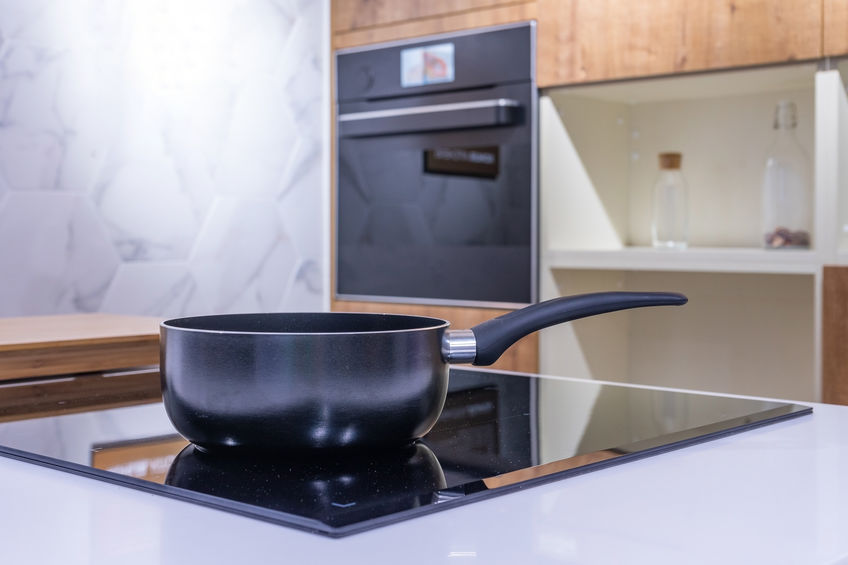
Cleaning Best Practices
To ensure the longevity of non-stick pots and pans, it is important to clean them properly after each use.
Avoid using abrasive materials such as steel wool or harsh chemicals that can damage the non-stick surface.
Instead, use a soft sponge or cloth with mild dish soap and warm water.
For stubborn stains, soak the pot or pan in warm water for a few minutes before cleaning.
Storage Tips
Proper storage is also important for maintaining the non-stick surface of pots and pans.
Avoid stacking them on top of each other, as this can scratch the surface.
Instead, store them in a single layer, with a soft cloth or paper towel between each piece to prevent scratches.
Hanging them on a pot rack is also a good option, as it keeps them organized and easily accessible.
Avoiding Common Damages
To prevent damage to the non-stick surface, avoid using metal utensils when cooking with non-stick pots and pans.
Instead, use silicone, wood, or nylon utensils that won’t scratch the surface.
It is also important to avoid overheating the pots and pans, as this can cause the non-stick coating to break down.
Use low to medium heat when cooking, and never leave an empty pot or pan on a hot burner.
By following these simple maintenance and care tips, non-stick pots and pans can last for many years, providing an easy and convenient cooking experience.
Innovations in Non-Stick Surfaces
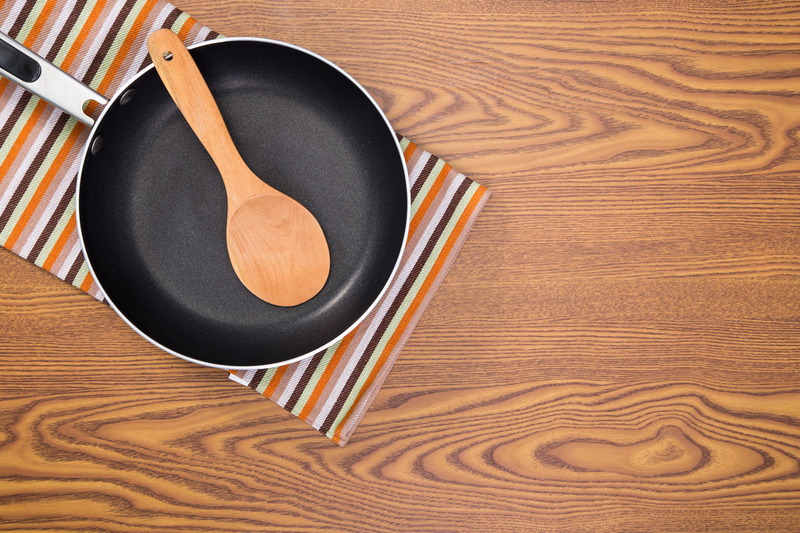
Non-stick pots and pans have come a long way since their invention in the 1930s.
With advancements in technology and a growing demand for healthier and eco-friendly options, manufacturers are constantly innovating to create longer-lasting, non-toxic non-stick surfaces.
Latest Non-Stick Technologies
One of the latest non-stick technologies is diamond-infused coatings.
These coatings use a combination of diamond particles and a non-stick material to create a surface that is not only durable but also scratch-resistant.
Another popular technology is ceramic coatings, which are made from natural materials and are free from harmful chemicals.
Ceramic coatings are also known for their excellent heat distribution and retention properties.
Another innovation is the use of titanium in non-stick coatings.
Titanium is a strong and durable material that can withstand high temperatures and is resistant to scratches and abrasions.
These coatings are also free from harmful chemicals like PFOA and PFTE.
Eco-Friendly and Non-Toxic Options
As more people become aware of the harmful effects of traditional non-stick coatings, manufacturers are developing eco-friendly and non-toxic options.
One such option is the use of plant-based coatings.
These coatings are made from materials like coconut oil and are free from harmful chemicals.
They are also biodegradable and compostable, making them an excellent choice for environmentally conscious consumers.
Another option is the use of ceramic coatings.
As mentioned earlier, ceramic coatings are made from natural materials and are free from harmful chemicals.
They are also easy to clean and maintain, making them a popular choice for those who want a non-toxic and long-lasting non-stick surface.
In conclusion, there are many innovations in non-stick surfaces that offer longer-lasting, non-toxic options for consumers.
From diamond-infused coatings to plant-based and ceramic coatings, there are many choices available for those who want a healthier and eco-friendly option for their cookware.
Comparing Non-Stick Cookware Performance
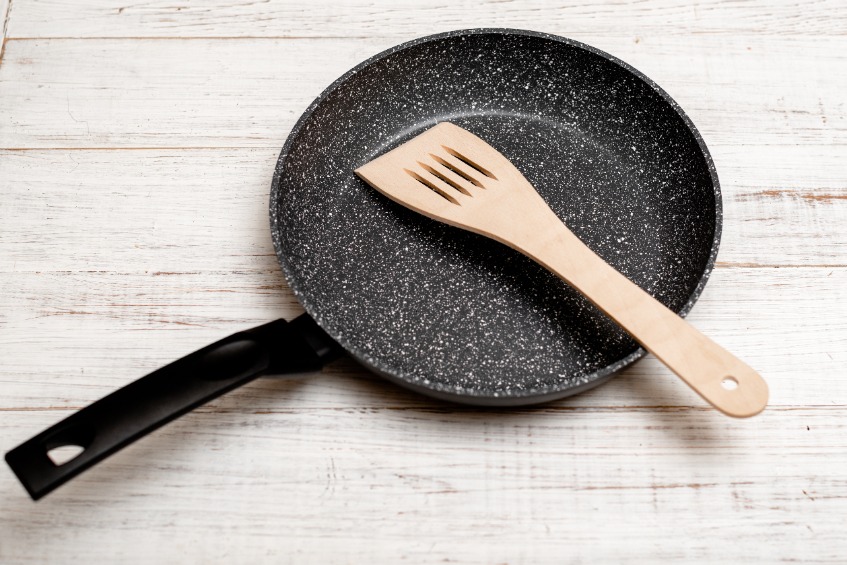 When it comes to choosing the best non-stick cookware, there are a few factors that you should consider.
When it comes to choosing the best non-stick cookware, there are a few factors that you should consider.
In this section, we will compare the performance of different non-stick cookware based on heat distribution and resistance, scratch and wear resistance.
Heat Distribution and Resistance
The heat distribution and resistance of non-stick cookware are crucial factors to consider as they impact the cooking quality and the lifespan of the cookware.
Ceramic and titanium non-stick cookware are known to have excellent heat distribution and resistance.
They are also safe to use at high temperatures, making them ideal for searing and browning.
On the other hand, Teflon non-stick cookware is not as heat resistant as ceramic and titanium cookware.
It is recommended to use Teflon cookware at low to medium heat to avoid damaging the non-stick coating.
Scratch and Wear Resistance
Scratch and wear resistance are important factors to consider as they impact the lifespan of the non-stick cookware.
Ceramic and titanium non-stick cookware are known to be scratch-resistant and can withstand the use of metal utensils.
They are also less likely to wear off over time.
Teflon non-stick cookware, on the other hand, is not as scratch-resistant as ceramic and titanium cookware.
It is recommended to use wooden or silicone utensils to avoid scratching the non-stick coating.
Over time, the Teflon coating may wear off, reducing the lifespan of the cookware.
In summary, when comparing non-stick cookware performance, ceramic and titanium cookware are superior in terms of heat distribution and resistance, scratch and wear resistance, and lifespan.
Teflon cookware is a more affordable option but requires more care and attention to maintain its non-stick properties.
Selecting the Right Non-Stick Cookware

When it comes to selecting the right non-stick cookware, there are a few factors to consider.
Matching the cookware to the cooking style and balancing price versus performance are two key considerations.
Matching Cookware to Cooking Style
Different cooking styles require different types of non-stick cookware.
For example, if you frequently cook delicate foods such as fish or eggs, you may want to consider a pan with a ceramic non-stick coating.
Ceramic coatings are known for their ability to evenly distribute heat and prevent food from sticking to the pan.
On the other hand, if you frequently cook with high heat, a pan with a PTFE (polytetrafluoroethylene) non-stick coating may be a better option.
PTFE coatings are known for their high heat resistance and durability.
Price versus Performance
When it comes to non-stick cookware, the old adage “you get what you pay for” often rings true.
While it may be tempting to opt for a cheaper option, it’s important to consider the long-term cost of the cookware.
Investing in high-quality, long-lasting pans may be more expensive up front, but it can save money in the long run by avoiding the need to replace cookware frequently.
Additionally, high-quality cookware is often more durable and can withstand the use of metal cooking utensils without scratching or damaging the non-stick coating.
Overall, selecting the right non-stick cookware requires careful consideration of cooking style and balancing price versus performance.
By taking the time to carefully select cookware that meets your needs, you can ensure that you have durable, long-lasting pans that will serve you well in the kitchen.


